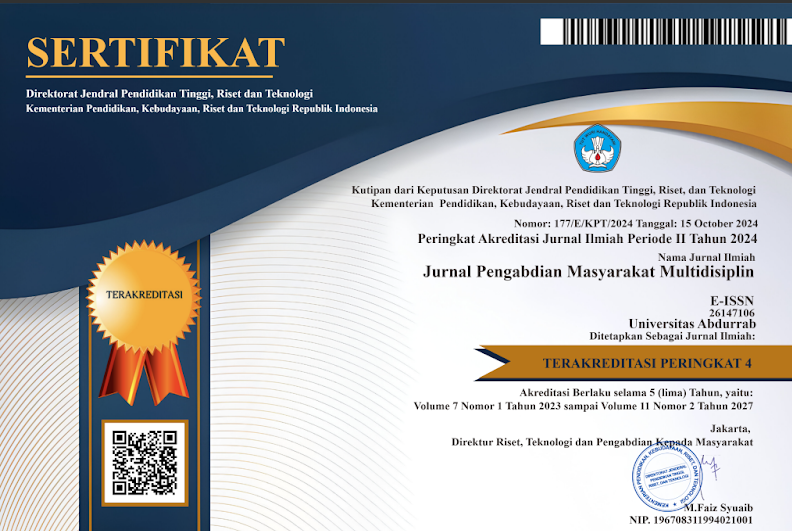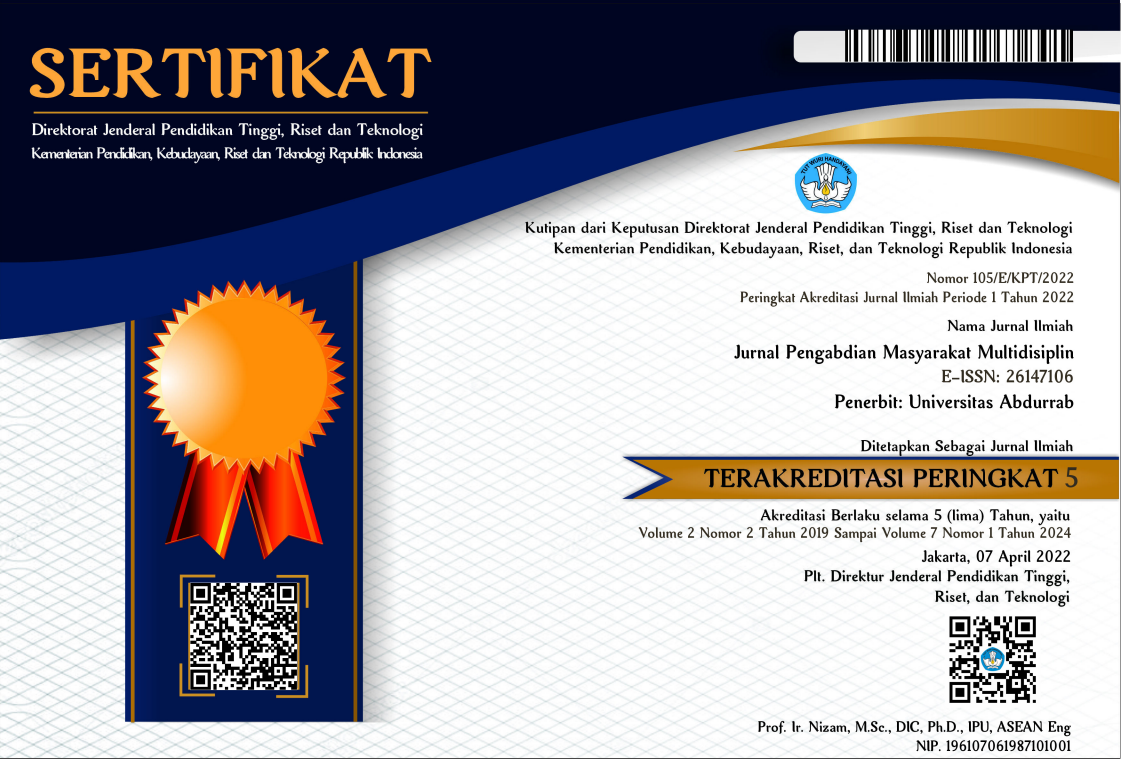PKM KELOMPOK PETANI PULAU-PULAU KECIL PEMBUAT BIOCHAR UNTUK PENINGKATAN PRODUKSI PALAWIJA
DOI:
https://doi.org/10.36341/jpm.v5i2.2172Keywords:
Keyword: biochar, simple furnace, closed combustion, increased productivityAbstract
Knowledge of farmers in small islands and farming communities in general about the management of agricultural waste for soil fertilizing agents is still low. Agricultural waste is often burned in the fields so that only ash is produced. In addition, the burning of agricultural waste results in the loss of many nutrients contained and can kill microorganisms that can fertilize the soil. Whereas the waste can be used to make biochar by slightly changing the way the waste is burned. Biochar can be used to overcome soil fertility problems to support food sustainability. The objectives of this community service activity are a) to introduce the benefits of biochar as a soil fertilizer to small island farmers and young farmers in Manding Laok Village; b) improve the skills of farmers and young farmers in making biochar using the simple stove method and closed-burning drum through training; c) application of biochar in growing media for vegetable crops. The PLA (Participatory Learning and Action) method is applied to the implementation of counseling, training, and demo plots of biochar application on vegetable growing media. ; c) partner farmers want to apply biochar to increase land fertility and crop production as many as 2 farmers. This activity needs a follow-up on the use of combustion smoke as liquid smoke for biopesticides.
Downloads
Downloads
Published
How to Cite
Issue
Section
License
1. Copyright of all journal manuscripts is held by the Jurnal Pengabdian Masyarakat Multidisiplin.Formal legal provisions to access digital articles of electronic journal are subject to the provision of the Creative
2. Commons Attribution-ShareAlike license (CC BY-NC-SA), which means that Jurnal Pengabdian Masyarakat Multidisiplin is rightful to keep, transfer media/format, manage in the form of databases, maintain, and
3. publish articles.Published manuscripts both printed and electronic are open access for educational, research, and library purposes. Additionally, the editorial board is not responsible for any violations of copyright law.
licensed under a Creative Commons Attribution-ShareAlike 4.0 International License.







